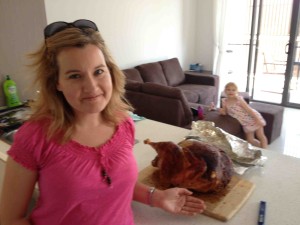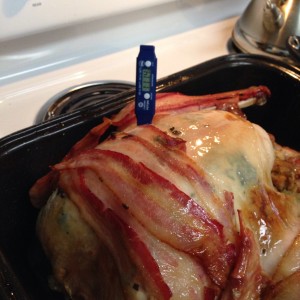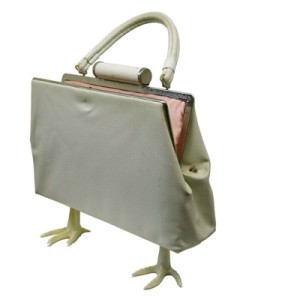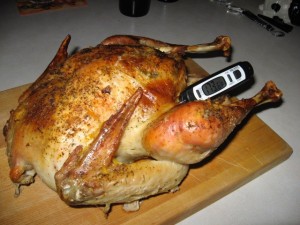My latest column for Texas A&M’s Center for Food Safety:
I have this weird affliction (among many): The more I read about a food involved in an outbreak, the more I crave it.
 Mad cow disease, I want beef
Mad cow disease, I want beef
Salmonella in eggs; I want an omelette
WHO cancer report? Had a steak the next day, and gave the kid a salami sandwich for lunch.
Salmonella in peanut butter? Won’t go there, never liked peanut butter.
The point is that crises or occasions are opportunities to get compelling food safety information into the public discourse.
Unfortunately, most of it sucks.
The U.S. glutton-fest known as Thanksgiving, which kicks off the six-week shopping orgy until Christmas, has appeared on calendars again.
As you do.
And simultaneously, the U.S. Food and Drug Administration has finally approved genetically engineered salmon that has been in the works for over a decade (or two, I can’t keep track).
This has sparked a call for labels on all things genetically modified (I prefer engineered, all food is genetically modified).
FDA says, there’s no legal requirement for companies to label foods as genetically modified.
 As you do.
As you do.
Because FDA’s job is to regulate based on safety, not on consumer whims.
If retailers and consumer groups want to make a fuss, go ahead.
But your arguments suck.
I’ve always been a fan of full disclosure whether it’s labeling, point-of-sale info, a web url, provide full information on how food is produced.
Most people don’t care, but some do, and they can make a lot of noise.
When we sold genetically-engineered and conventional sweet corn and potatoes at a local market in Ontario (that’s in Canada) back in 2000, people preferred the GE stuff – because it required no pesticides.
The more info the better – for those who care.
With turkeys, consumers are, according to NPR , inundated with labels: natural, fresh, no hormones, young, premium and so on.
Fresh has nothing to do with the time between slaughter and sale. Instead, it means that the turkey has not been cooled to below 26 degrees Fahrenheit. In other words, it was never frozen.
The U.S. Department of Agriculture does not define young for turkeys, but it requires that turkeys that lived more than a year be labeled as yearling or mature.
USDA says natural means no artificial ingredients have been added to the turkey meat, and the meat is only minimally processed.
Free-Range are raised in the standard, crowded houses but have access to the outdoors.
Premium means nothing.
No Hormones Added means nothing: By USDA law, turkeys (and other poultry) are not allowed to be given growth hormones.
And so it goes.
A possible fix is using smart phones and QR codes, so those who care can find out everything – and I mean everything, including if the seed was derived from radiation mutagenesis, a primal form of genetic engineering – if they want.
Meanwhile, we have enough food safety idiots practicing the things that actually make people sick.
During a cooking segment on the Today show this month, Matt Lauer handled an uncooked turkey, wiped his hands with a towel, then grabbed a piece of the cooked turkey that was sitting nearby and gobbled it down.
The tweets said, “Enjoy Salmonella for the next 24 hours, idiot,” and “We were screaming at the television set. Did you not hear us?” Lauer apologetically explained all of this on the next day’s show.
Other holiday tips:
Do not wash turkey.
Do not place a whole turkey over your head.
Do not pass babies with leaky diapers around the table.
In 2005, one American recalled how, when dessert arrived, the family started passing around the newborn baby. As recounted on the Internet site, fark.com, “Apparently, the baby had a pretty full diaper, and it was kinda leaking. He was passed to my uncle, and then passed to someone else. What my uncle didn’t notice was that a little something rubbed off of the baby as he was passed. He looks down on his tie and sees what he believes is some pumpkin pie filling, so he scrapes it off, and takes a bite. He spent the rest of the night in the back yard throwing up.”
We’ll be having turkey and duck with friends on the weekend. It’ll be safe.
Dr. Douglas Powell is a former professor of food safety who shops, cooks and ferments from his home in Brisbane, Australia.
 This year it’s quick and simple. Just enter the weight of your turkey in the calculator, and it will calculate the correct cooking time to ensure your turkey is cooked to perfection.
This year it’s quick and simple. Just enter the weight of your turkey in the calculator, and it will calculate the correct cooking time to ensure your turkey is cooked to perfection.










